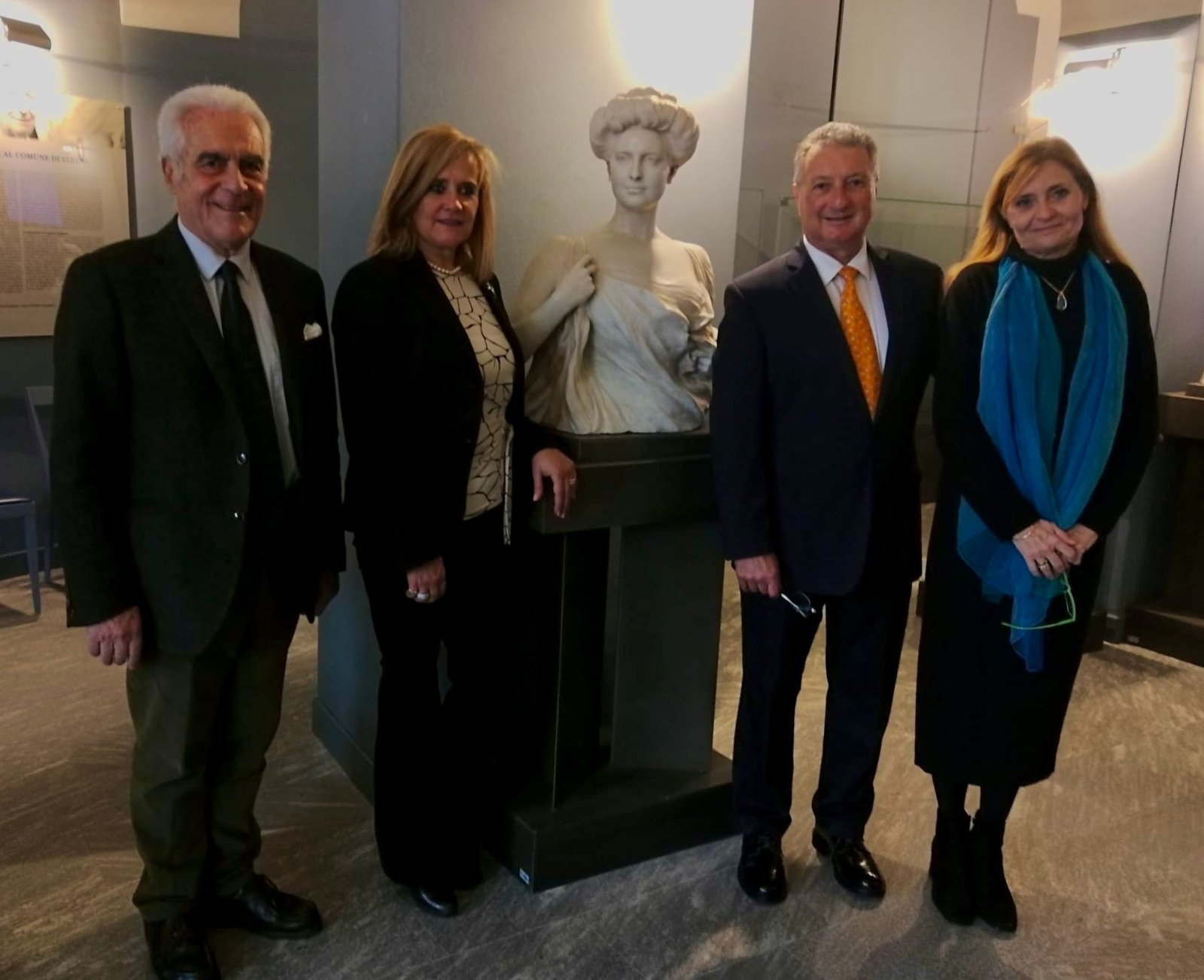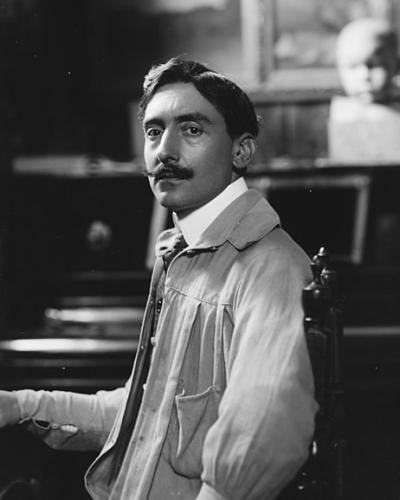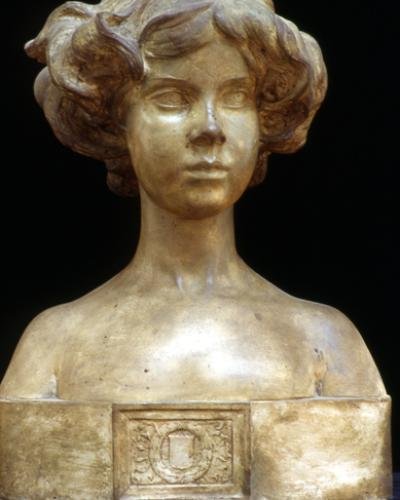
A visit took place Thursday morning, 22 February 2024, to the Spazio Espositivo Canonica in Stresa, Italy. Joining me was Prince Roberto Troubetzkoy Hahn and his charming wife, Giovanna. Unfortunately, due to other pressing matters, the historian, Michail Talalay, was unable to join us. It was an opportunity to visit in person, and for the first time, the marble bust of Princess Maria Pavlovna Demidoff (1877-1955) by the famous sculptor, Pietro Canonica. We were delighted to be joined by the mayor of the city of Stresa, Mrs. Marcella Severino, together with members of her talented team. We also received a scholarly overview on the artist and his works on display from the curator, Dr. Thea Tibiletti. A visit to the nearby Ducal Palace also was organised for us where again we were provided a scholarly overview by the curator in residence.
The Spazio Espositivo Canonica, located within the Town Hall of Stresa, is the new site for Canonica's works of art following an earlier and temporary display at the Palazzo dei Congressi. The sculptures by Canonica have now been restored and proudly placed on display at this more suitable and permanent site.
In regards to how Canonica's works of art reached Stresa, this was due to a period of seventeen years, starting in 1898, when the artist was a frequent visitor to Stresa due to his friendship with the Duchess of Genoa, mother of Queen Margherita of Savoia. Canonica would sculpt a number of bronze monuments for the town of Stresa over a period extending over thirty years. Due to these strong ties to the town, in 1953 the artist donated many plaster and marble works of art to the City of Stresa that are now proudly on display at the Spazio Canonica.
In regards to the marble bust of Princess Maria Abamelek-Lazarev, it was made for the Princess in Rome, in 1904, and, as explained by the historian, Michail Talalay, it was the first of many works of art commissioned to the artist by members of the Russian aristocracy and royal family. Princess Maria would return the sculpture to the artist following the passing of her husband Prince Abamelek-Lazarev in 1916. Another fascinating work of art that is on display is a delicate plaster cast of Princess Elizabeth of Greece and Denmark (1904-1955) that dates to the artist's short two years in Russia from 1908 to 1910.
It was in 1908, while Canonica was in Paris, that he met Grand Duke Vladimir Alexandrovitch, President of the Russian Academy of Fine Arts (1847-1909), together with his wife, Maria Pavlovna. The Grand Duke commissioned the artist to sculpt the bust of Maria Pavlovna together with an invitation to visit Russia. While in Russia, the Italian sculptor was introduced to members of the royal family where he made busts of Alexandra Feodorovna and her son the Tsesarevich Alexei. A bronze bust of Nicholas II, that is now in Buckingham Palace, was sent by the Emperor and Empress to their cousin, King George V for Christmas 1912, who wrote in acknowledgement ‘I thank you both a thousand times’. In 1910 Canonica would also sculpt two marble busts of the grandchildren of Grand Duke Vladimir Alexandrovitch, Princess Olga of Greece and Denmark (1903–1997) and her younger sister, Princess Elizabeth of Greece and Denmark (1904-1955). These marble busts were placed on display at the Grand Duke's imposing and splendid, Vladimir Palace, situated on the waterfront of the south bank of the river Neva.
Unfortunately, the current whereabouts of the original marble busts of the two princesses is unknown. Preliminary research uncovered that the originals are neither at the Hermitage nor at the Vladimir Palace. However, what is interesting is that plaster casts of the two marble busts are on display at the Pietro Canonica Museum at Villa Borghese in Rome. These works of art reached Rome from the time in 1927 that the artist received a concession from the municipality to use the building, the Fortezzuola, as his home studio. In return, the artist bequethed all the works collected at his residence to create a museum in his name.
However, a review of the images of the works of art at the Fortezzuola would suggest that the identity of each princess is incorrectly cited. This position is supported by the evidence provided by Count Hans-Veit of Törring-Jettenbach, the son of Princess Elizabeth of Greece and Denmark. In fact, at his residence, the Count is in possession of a similar plaster cast of the bust that is on display at the Spazio Canonica in Stresa. On the back, the Count's father wrote: “Elisabeth Gräfin zu Toerring, Prinzessin von Griechenland”.
Our group, that is now growing, look forward to returning to visit this delightful museum in Stresa in early April and armed with all this new insightful knowledge and information. We do believe that other interesting discoveries will come to light in connection to Canonica's close ties with Russia by the time of our return to Stresa in a few week's time.
Alexandre Tissot Demidoff






